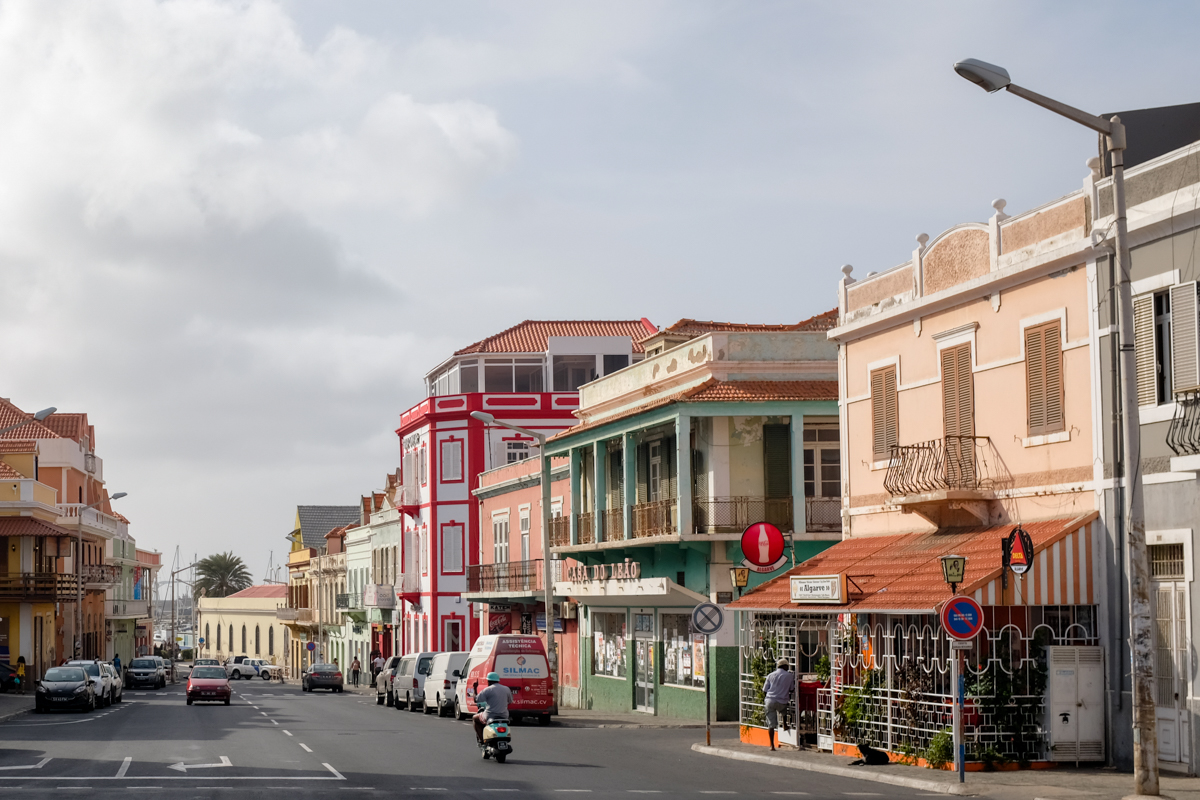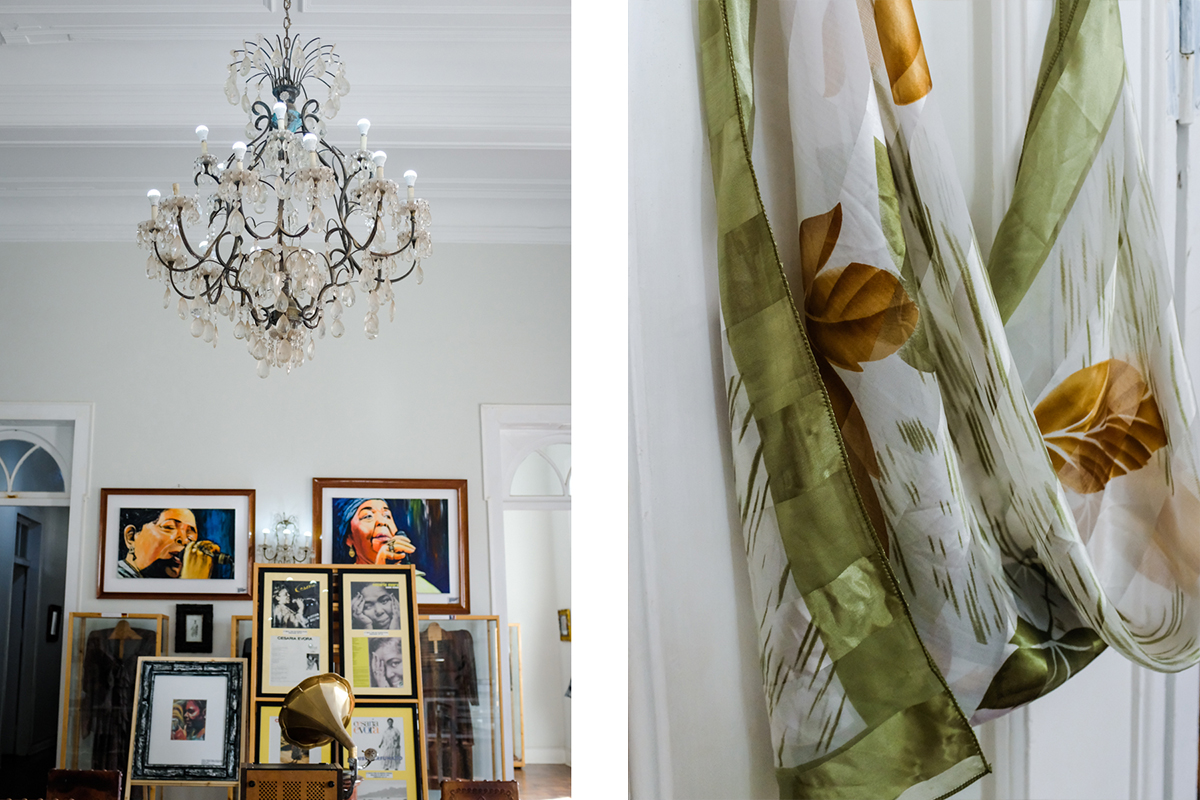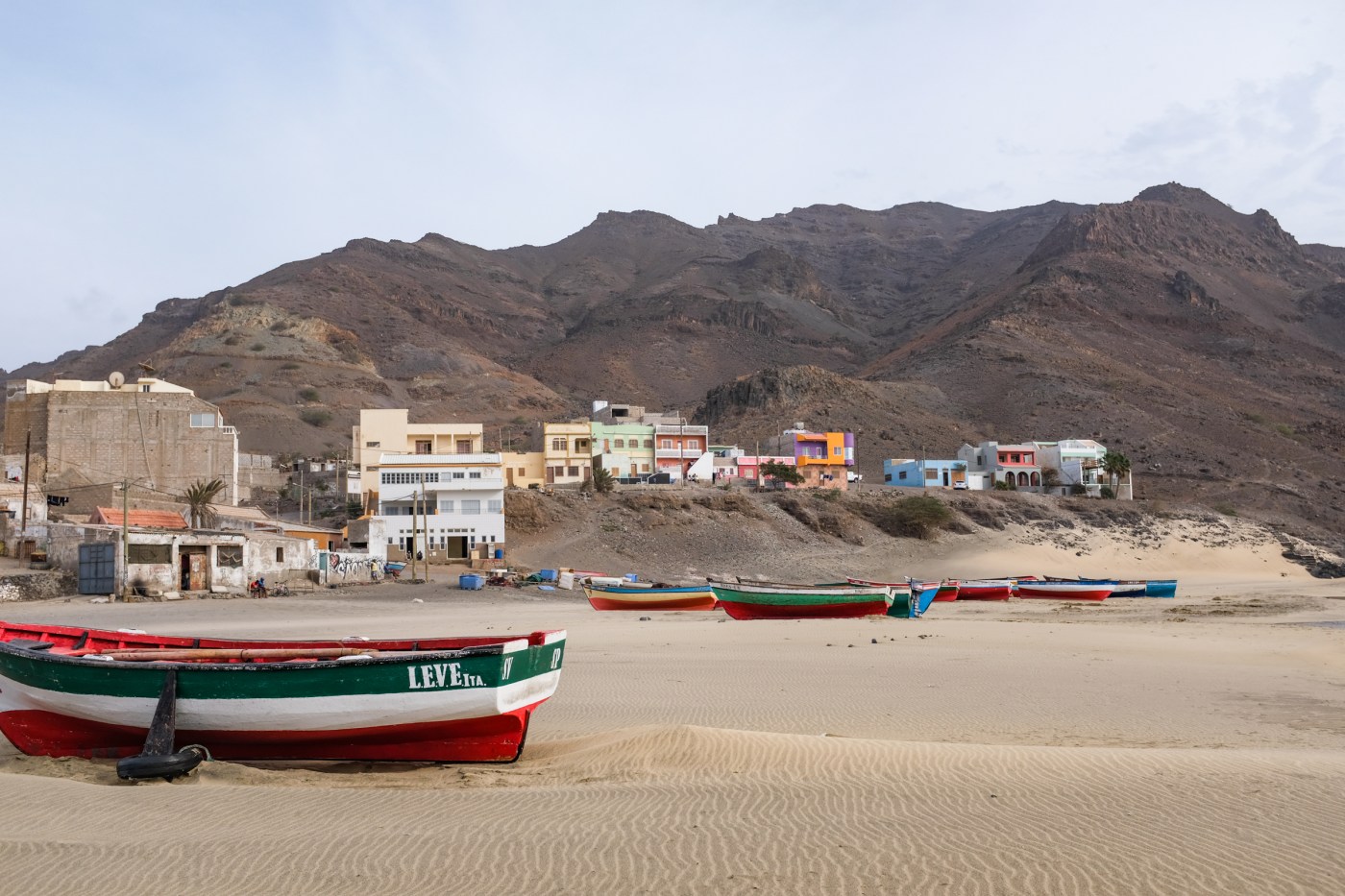São Vicente, or “Soncente” as the locals call it in vernacular Kriolu, is only the seventh largest of Cabo Verde‘s ten islands, but as the saying goes: good things come in small packages. The crop of land with a crablike chassis off the coast of West Africa is regarded as the nation’s cultural capital, and for good reason. Out of its volcanic terrains emerged several genres of music distinctive to the archipelago. Its one and only city, Mindelo, has also garnered wide recognition for its lively and spirited Carnival celebrations, considered by many to be the world’s finest after Rio‘s.


For decades, Mindelo’s natural bay was one of the most important refueling stations for steamships plying the Atlantic. The mélange of colonial and neoclassical architecture in the city center attests to its significance during the late 19th and early 20th centuries.
“Quem ca conchê Mindelo, ca conchê Cabo Verde—Those who don’t know Mindelo don’t know Cabo Verde.” —Manuel d’Novas, poet and composer
Today, cruise ships have replaced the ocean steamers docking at Porto Grande, and São Vicente has transformed from a mere stopover into a destination whose exotic flavors, intricate sounds, stunning natural surroundings, and generous hospitality have earned the tiny island a place in the hearts of all who set foot on its shores.


1. Experience Mindelo’s live music scene and lilting mornas
“Soncente” is a diving board into a whole new world of music, and that is no understatement. Mindelo, in particular, has a detailed sonic pedigree. The city is perhaps most famous as the hometown and resting place of Cabo Verde’s barefoot diva, Cesária Évora, renowned for songs such as “Sodade” and “Petit pays”—andante variants of a musical style which sprouted from Mindelo known as coladeira. The coladeira and the genre it emerged from, the morna, are Cabo Verde’s contributions to the world of art and music. Identifiable by sweeping refrains soused in nostalgia and melancholy, their lyrics touch upon matters of the heart: separation, longing, and suffering in new, unknown lands.

The soulfulness of songs like “Sodade” and “Petit pays” runs deeper than Césaria. With very few significant natural resources, Cabo Verde has always been a country of emigration, and adieus are a common theme that form part of a greater, collective identity. The rhythm and melodies of the sorrowful mornas and stinging coladeiras flow in the blood of all those who live in Mindelo and on São Vicente.
Si bo t’screve’m, m’ta screve’b
Si bo t’squece’m, m’ta squece’b
Até dia ke bo voltà
If you write me, I will write you
If you forget me, I will forget you
Until the day you come back
—Sodade
On the island, people young and old can hold a tune and strike up a beat, and witnessing a live performance in the city is a privilege as well as a pleasure. Many restaurants and bars are hotspots for live music, with local talents taking to the floor every evening. In addition to stirring reinterpretations of Cabo Verdean classics, songs from contemporary artists are also part of the repertoire. A perennial favorite is Mayra Andrade, whose opuses in Cabo Verdean Kriolu and Portuguese have been credited with helping modernize the morna.
2. Indulge in the flavors of the Lusophone archipelago
Cabo Verdean cuisine is hearty and nourishing, and enticing flavors from all edges of the archipelago can be found right on São Vicente. The vibrant Mercado Municipal is a good starting point from which to explore the country’s culinary offerings. In addition to the abundance of tropical fruits and vegetables are the small, innocuous bottles filled with punch-packing piri piri sauce and homemade grogue, Cabo Verde’s firewater distilled from sugarcane. Just a stone’s throw away is the city’s fish market, which gives an eye-opening preview of the treasures lured from the sea: limpets, gooseneck barnacles, and fried moray eel are just some of the delicacies one might come across.

Bafas are a favorite way to fill the stomach between meals. These savory, tapas-sized snacks are usually deep-fried, made of fish, and not unlike the well-known croquettes, rissoles, and pastries found on the Iberian Peninsula. Similar to the oceanic Madeira with which it forms the island chain of Macaronesia, Cabo Verde was populated by the Portuguese, and it remained a part of Portugal for five hundred years until independence in 1975. Given the centuries-long tie, it is no surprise that many recipes from the Cabo Verdean cookbook are rooted in European history.

The national dish, cachupa, however, is unequivocally creole, with every island boasting its own recipe, secret ingredients, and even name. On São Vicente and the northern Barlavento Islands, it is known as cachupa (or katxupa); on southern Sotavento Islands such as Brava, it is known as manchupa or munchupa. At its base, it is a slow-cooked stew of tuberous roots, soaked pulses, and samp, often embellished with mackerel, cuts of meat, or—if eaten for breakfast—a fried egg.
Indulgences aren’t something that São Vicente is short on, either. An evening at Taverna promises not only decadent seafood and exquisite wine from the fiery isle of Fogo, but as well ever-popular traditional fare like doce de papaya and goat cheese from the verdant island of Santo Antão. To cap it all off, a tipple of honey-infused ponche (grogue mixed with lime and molasses) is sure to hit the sweet spot.
3. Wind down the afternoon and enjoy a sunset at Laginha
Laginha is where the denizens of Mindelo flock for a day of sun and sand. The stretch of beach, located within a few minutes’ walk from the city center, is a prime spot to enjoy the morabeza, or hospitality, that Cabo Verde is known for. Pull up a sun lounger by Kalima Beach Club and alternate between the gleaming views of Thor-thighed lifeguards flexing across the sand and dipping into the gentle laps of the warm ocean waves.


4. Explore São Vicente’s seascapes by snorkel and scuba
A mostly arid and volcanic landscape makes São Vicente somewhat of an unexpected destination for hydrophiles, but beneath the layers of ochre and red is a blue world full of life and biodiversity. Next to the ferry station, the Dive Tribe of Mindelo offers scuba diving options for beginners and enthusiasts of all levels. The sea around São Vicente is home to nurse sharks, elusive frogfish, and several shipwrecks.

In the fishing village of São Pedro, the company operates a second dive center near a natural turtle sanctuary. A snorkeling tour during feeding time guarantees an up-close and personal experience unlike any other. The waters surrounding the sanctuary are also a prime site for windsurfing, although not an ideal place for novices to try their luck. Here is one of the windiest spots on the entire archipelago, thanks to the mountains enclosing both sides of the beach.
5. Idle by one of the island’s tranquil seaside villages
Beyond the borders of the city, the calmness of island life takes over. With 90% of the entire population living in Mindelo, the remaining settlements on São Vicente can feel as vacant as the ruddy mountain peaks that encircle them. But life outside the city edges is not without its charm. Watch the waves as they drag across the strand in veils of whipped froth, or the men as they work together to haul a brightly colored boat out from the ocean. The village scenes of São Pedro, Calhau, and Baía das Gatas are a reminder that life doesn’t always need buzz to be beautiful: the best moments are often oh-so-simple.

How to get to São Vicente
TAP Air Portugal operates daily international flights from Lisbon (LIS) and Cabo Verde Airlines operates daily domestic flights from Praia and Sal to São Vicente’s Cesária Évora International Airport (VXE) .
Where to stay on São Vicente
Casa Café Mindelo, located in the heart of Mindelo, is more than the sum of its parts: it is a meeting point for Cape Verdeans and visitors alike where guests can order a chilled bottle of Strela while watching the bustle of town or enjoy a dinner with live music and dance in the downstairs bistro. Above, lofty bedrooms decorated handsomely with West African elements and a Moroccan-style patio make an equally pleasant space to relax and take life easy. Doubles around CVE 6,000 or US $60 per night.
Alternatively, for a less central locale with inimitable balcony views of Mindelo Bay and the striking Monte Cara, Solar Windelo is a mere five minutes’ walk from downtown. The guesthouse’s eclectic touches are credited to Cape Verdean composer Vasco Martins, who designed and lived in the house until 2006. The Vasco Suite is around CVE 7,500 or US $75 per night.
Exploring beyond São Vicente
São Vicente’s larger neighbor to the northwest, Santo Antão, is more than worth its own voyage. Accessible only by ferry from Mindelo’s port, the island’s lush, fertile valleys and palm-lined villages are a sharp contrast and perfect complement to a stay on São Vicente.
